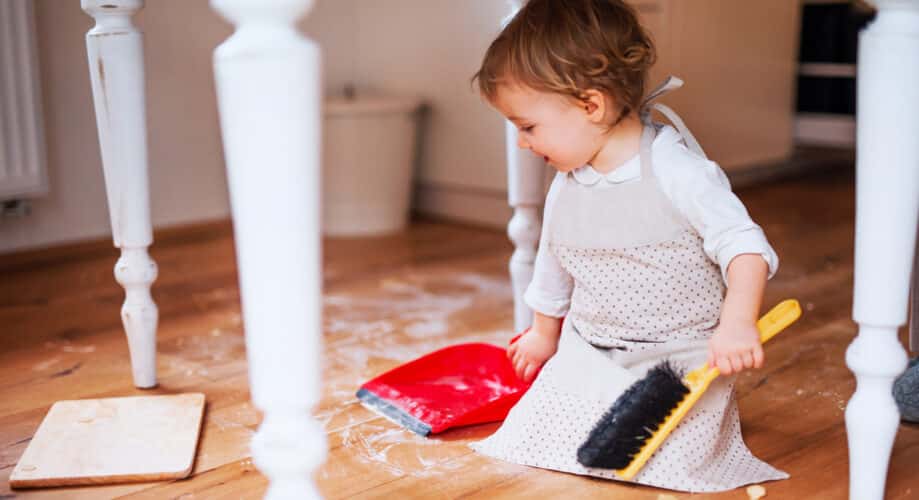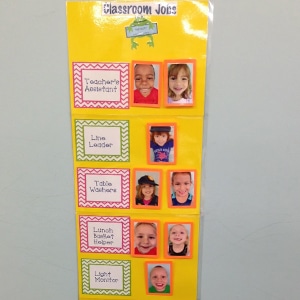You can help children keep track of their responsibilities by posting the jobs in a visible location in your classroom. Posting a photo of the job alongside a photo of the child who will be doing the job, will give children an easy way to refer to the job list anytime they need to remind themselves of their responsibility for that day. An example of a job chart from a KinderCare classroom is included here for some inspiration.
If you are looking for easy, printable job lists, there are a variety of free options available for download on the Teachers Pay Teachers website.
Regularly Rotate Jobs
To ensure that all children have a chance to participate, it is important that jobs are regularly rotated. This might mean switching every day, once a week, or every other day, depending on what works best for your classroom’s routine.
When selecting jobs, it is helpful to have a way to randomly pull names. You might keep a list of children’s names on popsicle sticks or index cards that you can easily mix up and pull at random. This helps to keep things fair by ensuring that responsibilities are regularly rotated. Pulling names is a great activity for morning meetings or circle time so that children can feel that they are part of the process as they watch the selection of names to go with each job.
Talk about Feelings
Classroom jobs can sometimes bring up big feelings. Young children might be disappointed on days that they do not get to do certain jobs that they enjoy – and that’s okay! By acknowledging these feelings and talking with children about their experience, educators can support each child’s social-emotional skill development.
Offer Praise & Encouragement
Classroom jobs are great confidence builders for young children. When educators call out and praise children for completing their tasks, it helps little ones feel motivated, encouraged, and excited to keep helping out in the classroom. This is why offering praise and encouragement for hard work is especially important for a child’s self-esteem, and is a wonderful way to support learning, growth and development.






